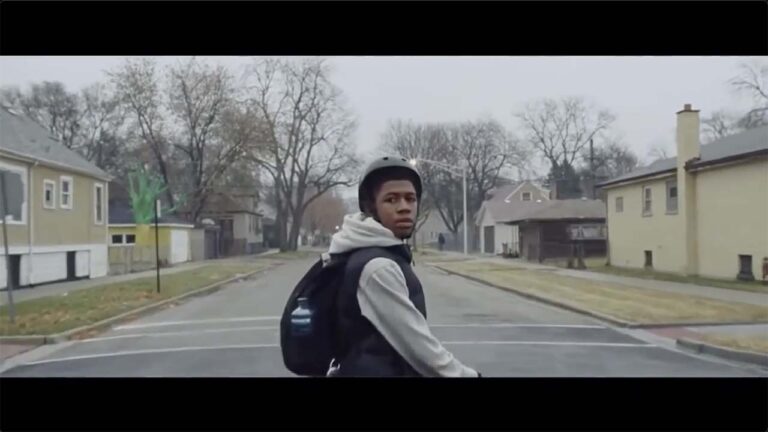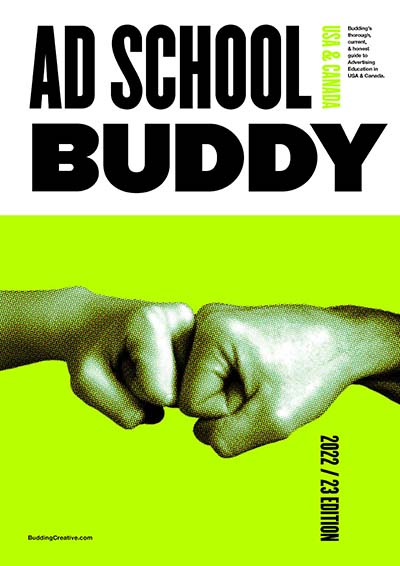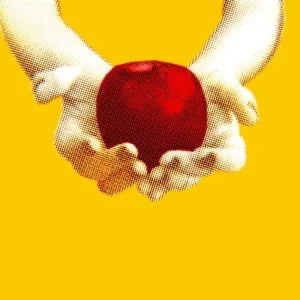Selling campaign ideas to your creative director, the agency and the client
Selling campaign ideas is just as important as the craft of coming up with them. Too often I see great campaign ideas fall flat because nobody thought how to sell them.
Do you think Don Draper ad libbed his presentations? No. A writer’s room inside a TV studio wrote the pitch for him. They approached the presentation from several directions, found the most compelling expression and crafted it into three perfect minutes of television.
If you imagine you can think on your feet to that standard, you’re kidding yourself.
So think carefully about how you sell your campaign ideas. Is there a story behind it? Does there need to be? Should you create a video about it or do a couple simple sentences suffice?
Table of Contents
Picasso vs Van Gogh
Have you ever wondered why Pablo Picasso was able to become really rich and famous while alive when Vincent van Gogh’s work became commercially successful only after he was dead?
Communication is the difference. Picasso was an advanced communicator. He knew how to present himself and sell his work to the audience. But van Gogh had an eccentric personality, unstable moods, suffered from mental issues, and sadly committed suicide at the age of 37 – unable to sell any paintings during his lifetime.
Picasso became celebrated. He was filmed and photographed endlessly. He even appears in an Apple ad. And it’s all because he knew how to sell.
Selling campaign ideas is your real job
Yes you need to generate loads of ideas. But always put aside substantial time to work on the sell during every project.
The temptation is to spend every minute of your allocated time generating ideas. Just in case the magic idea slips out at the very last minute. Don’t do it.
For example, if I had two days, at the end of the first day I’d take an hour with my partner to review what we had and talk over the ideas that are resonating. We’d sleep on it, then first thing in the morning we’d look at them again for an hour to see if the shine has come off any the ideas.
Then we’d identify parts of the brief that we felt we hadn’t addressed strongly enough, and spend half a day coming up with new ideas.
We would stop generating ideas with two hours to go. Then we would be thinking about the best way of selling our campaign ideas to our creative director.
Because selling campaign ideas is your true purpose as a creative. Championing ideas for the agency’s clients that actually. get. made. It requires clear communication. And compelling storytelling. To see what I mean, look at Steve Jobs below selling the ‘Think Different’ campaign to select Apple staff. Masterful.
Selling campaign ideas to your creative director
Creative directors don’t want to work with adequate creatives. They want you to be great. Their careers depends on the quality of your ideas too. They want to be excited.
Know what doesn’t excite them? Half-finished, half-assed ideas.
So, don’t start any of your sentences with “We were kinda thinking”, or “This is sort of about” or “I don’t know if there’s anything in this area”. The worst is “We don’t have a tagline for this”.
Don’t present theoretical ads. Or vague paragraphs. If you don’t know whether an execution takes place in a park or the international space station, pick the one you think is best. Present a concrete idea to your creative director. Talk about options and alternatives afterward. But first help them imagine something real and specific.
Two things can happen when you present a theoretical ad. The first is that the creative director doesn’t get or like it and the idea dies. The second is possibly worse. If you leave the idea open-ended, the creative director fills in the blanks with whatever’s in his head. He/she discover that you can’t finish an idea yourself, and they will take a mental note of it. You just bought yourself a few more months as a ‘junior’. If you don’t quickly lift your game, you will begin to be thought of as ‘disposable’.
The power of story-telling
Never underestimate the power of charm. A gentle, warm confidence that places an audience at ease. So much of that attractive character comes from the skilful retelling of stories.
Interesting people often lead surprisingly ordinary lives, but they are not ordinary. What sets them apart is their ability to tell a good story. Stories sell ideas. And you should be developing that story from the very first internal presentation with your creative director.
In advertising, you have to tell the story of your campaign multiple times—to your partner, to your team, to your client, to your director—before you finally tell it to your real audience.
If those first tellings don’t go well, that final telling will never happen. So don’t overlook those first tellings. Give a lot of thought to how you’re going to bring the story to life. They should be as engaged by your telling of the story as they will be by the final execution.
There are no boring products. Only boring ways of talking about them. Believe you are the most interesting brand in the world, and you’ll be able to tell their story credibly.
How to build a story around your campaign idea
Every idea needs to be grounded in the brief above all. So start there.
Strip away all the jargon, the data and generalisations. Find who the person is at the centre of the brief.
Is the brief a bespectacled, balding man that wants a taste of his youth? Or is the brief a girl on the cusp of womanhood that wants the world to think she’s amazing, but is terrified she’ll get it wrong?
When you humanise the brief, that personality will bleed into your ideas. And it becomes easier to tell stories around them.
Honestly, one of the best places to learn more about selling campaign ideas through story-telling is the TV Series ‘Mad Men’. Not just because all of the presentations have great stories in them, but because of the demands of a 45 minute run-time, the pitches have to be succinct. Powerful and potent, but incisive and stripped of fat.
A word of caution. The story of the idea is NOT the story of how you came up with the idea. That’s just your ego looking for glory.
A story needs to be centred ON the idea. It can still be personal. In fact, that’s better. But if the story makes you sound ‘cool’ or ‘clever’, it’s the wrong story. You are looking for a story that encapsulates a simple, relatable human truth. The story brings the promise of the campaign to life, and makes it visceral.

Getting the wider agency excited in your next internal review
When selling campaign ideas, you need to understand how to tailor your story for different audiences. Your creative director will judge your ideas mostly across the creative engagement first, and secondly against the brief. Account management and strategists will look at them the other way around.
Before reviewing with the wider agency, you need to look at your sales pitch all over again.
Pre-Write the Case Study
A common exercise for novelists when they are a bit stuck and looking for a path forward for the narrative is to be is to write a review for it. Imagining how the press would describe your novel once published.
Do the same thing. Pre-write the case study. What’s the problem you are solving? Your insight? How does the execution of the idea make it more engaging? How did it engage with the business needs of the client?
This habit will make selling the campaign idea to account management so much simpler. You’ve couched the idea in the language of account people. You’ve taken the time to distil the brief from the point of view of the accounts department. It distinguishes you from 95% of creative teams that account people encounter.

Polish the Presentation
You’re a professional. Act like it. You really need to start presenting your work in the best possible light, even at an early stage like this. If you’re presenting a poster idea, take the time to actually mock it up as well as you can inside a mock-up template.
Start preparing a presentation deck in earnest. Write introductions to each idea that clearly link the brief and the business challenge to the expression of the campaign idea you are showing. Each agency likes to articulate their ideas in their own particular way. So, you might have a format that you would be encouraged to follow. That’s fine. But keep it succinct. People are here to see your ideas. Not to hear waffle about what they already know.
In the words of the great ad man, Albert Einstein: “Make things as simple as possible, but not simpler.”
That means don’t put too much text in your presentation. Or your audience will spend more time reading your slides instead of listening to what you’re saying. When you do use text in your presentation, keep it big and bold for readability.
Have one focal point per slide, even if it makes your slide deck longer. Too much content per slide will only end up overwhelming your audience.
Your presentation is a yellow brick road (see ad below). Make sure that every step of the journey is easily understood, inspiring and interesting.
Invite constructive feedback for your ideas
Include a slide in your presentation that clearly communicates what type of feedback you are and are not looking for in the meeting. Use a presentation template that includes an outline slide lets everyone know what will be covered and in what order. This adds structure to the meeting and ensures you don’t forget to review the items above during the meeting.
At the end of the presentation, show a recap slide with all of the options on one page. This makes it easier for discussion at the end of the review.
Also, respectfully ask if feedback can be left to the end of the presentation. Interruptions can stall a presentation and break your flow. Best to get everything out on the table all at once, and then discuss the merits or shortcomings of each idea when you are looking at the final summary slide.
An account department that feels included and likes you is much more worthwhile than one that feels shut out of the process. Involve the rest of the agency in the idea early, and prevent bruising fights later on. (See the ad below to see what I mean).
Selling campaign ideas to clients
Selling campaign ideas to a client is a whole agency effort. Which is why having the agency invested in the idea is so important. Make sure you respond promptly and intelligently to any feedback from the wider team (along with the guidance of your creative director to make sure the idea is as potent as it can be).
Rehearsals are vital
You’re putting on a show. So don’t forget your lines.
Rehearsals will help you move seamlessly from slide to slide. And it will help you concentrate on delivering the creative ideas in a compelling fashion, instead of trying to remember what bullet points you want to cover. If you’re confident in your work, your client will be too.
Practice and practice some more. Because it’s what we do in the dark that puts us in the light. (See the ad below)
Never stop improving your presentation skills
Clients have confidence in confident speakers.
Presentation skills help clients see our point of view and ultimately allow us to put ideas out into the world that we’re proud to put our names to.
Even if you are comfortable selling campaign ideas, you can still improve. Look online to how the greats talk in their interviews and speeches. They are erudite, thoughtful, well informed and calmly confident in the quality of their advice. They are successful because clients love them. They are Picasso’s. Not Van Goghs.
Take your time to present, and don’t rush. Be mindful and read the room. If you see someone checking the time or reading emails on their phone, it’s time to speed things up.
If the discussion gets off track or the meeting is scheduled to end soon, look for an opportunity to politely remind meeting attendees of the goals for the meeting, and offer to schedule a follow-up meeting to discuss the remaining topics if needed.
Because clients can’t help but be impressed by slick presentation.
Some simple presentation tips that might help
1. Know everyone’s names in the room, and USE THEM during the presentation. Everyone loves hearing their name spoken. Involve the audience. Make them feel that you are talking to them personally.
2. Use nurturing language. These phrases may be useful. What if… Imagine if we could… Let’s create… Perhaps we even…Why don’t we…
3. Avoid words and sentences that may give a feeling of indefinite outcomes, like: It might… We hope you like it… Maybe it will get lots of PR… We hope it will work…
4. Maintain eye contact. It’s recommended to use a so-called 50/70 rule. You should give around 50% of eye contact while speaking and 70% while listening. To avoid staring at people and make them feel uncomfortable, try to hold eye contact for about 4 to 5 seconds.
5. Leave gaps while you are talking. Usually, people sense time with their own individual perception. In other words, you may think that everything goes really fast, but the audience may feel this tempo as normal or slow.
6. Present your most straightforward ‘on-message’ design first. Doing this takes the pressure off the rest of the presentation, as the client is assured that they have something on the table is low-risk and works.
7. If you’re presenting multiple options, name each concept and show a recap slide with all of the options on one page. This makes it easier for discussion at the end of the review.
A great presentation will make your idea seem magical. It will burnish its benefits and diminish its shortcomings. (See the Lurpak ad below)
Finish the presentation on a high
Think about how you can leave some positive or motivational feelings at the end of your presentation. It could be some quote or call to action or a story that neatly closes the loop.
Make the people you are presenting to feel that they get a huge value and have spent their time efficiently. Help them leave the room with a feeling of gratitude filled with sensible thoughts and a will to act.
And most importantly, don’t overdo it. Never give them time to get bored, or to question the power of the idea. Get in. Sell your campaign idea as hard as you can. Then get out. And leave them with the warm glow of your idea. Not a sense of relief that the presentation is finally done.
Things to do

The Ad School Buddy
The complete guide. Undergrad, portfolio, grad incubators and more.
More Articles
The Ad School Buddy
To make it as a professional ad creative, your choice of school is key. This is the most comprehensive guide to creative education in North America by far.






